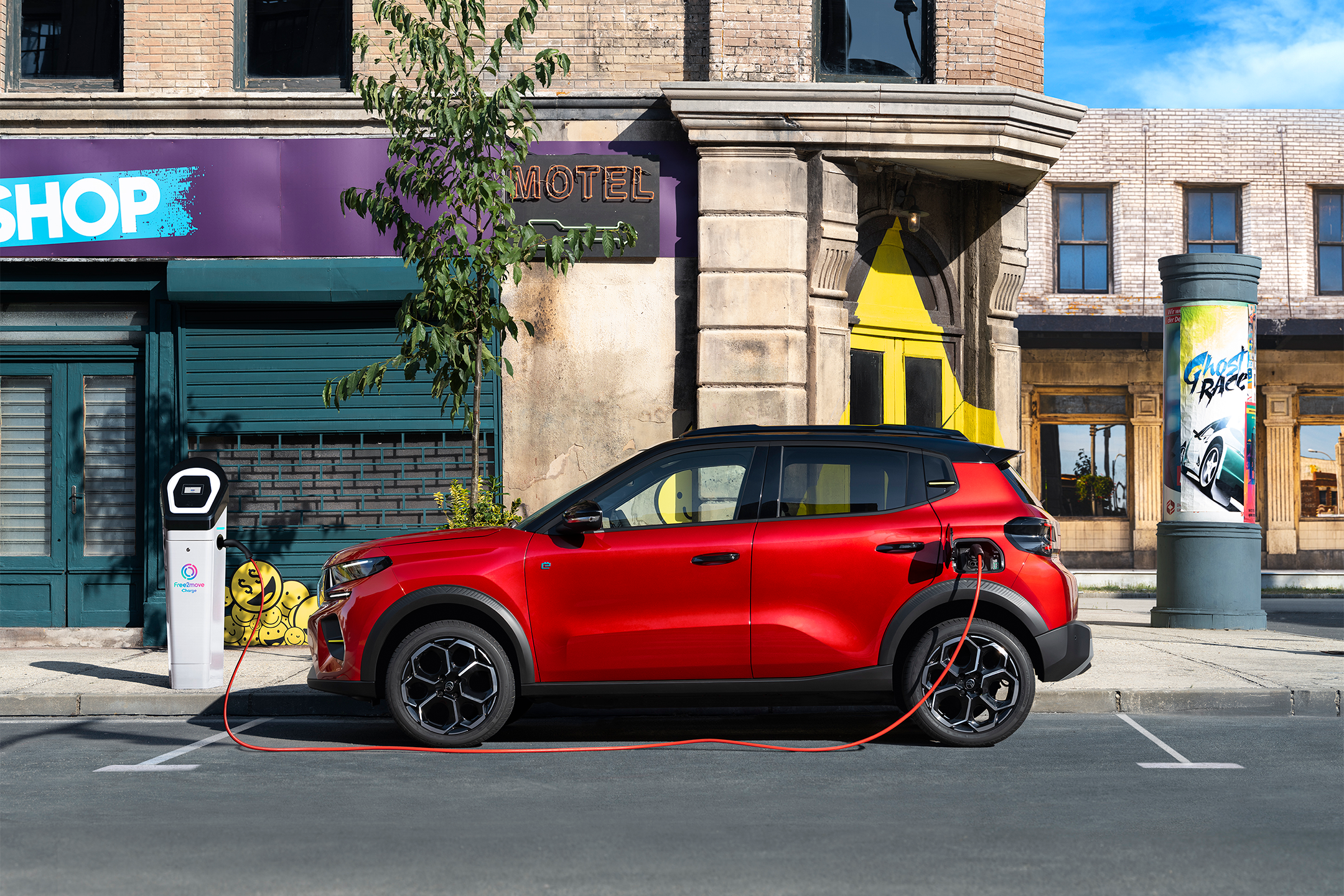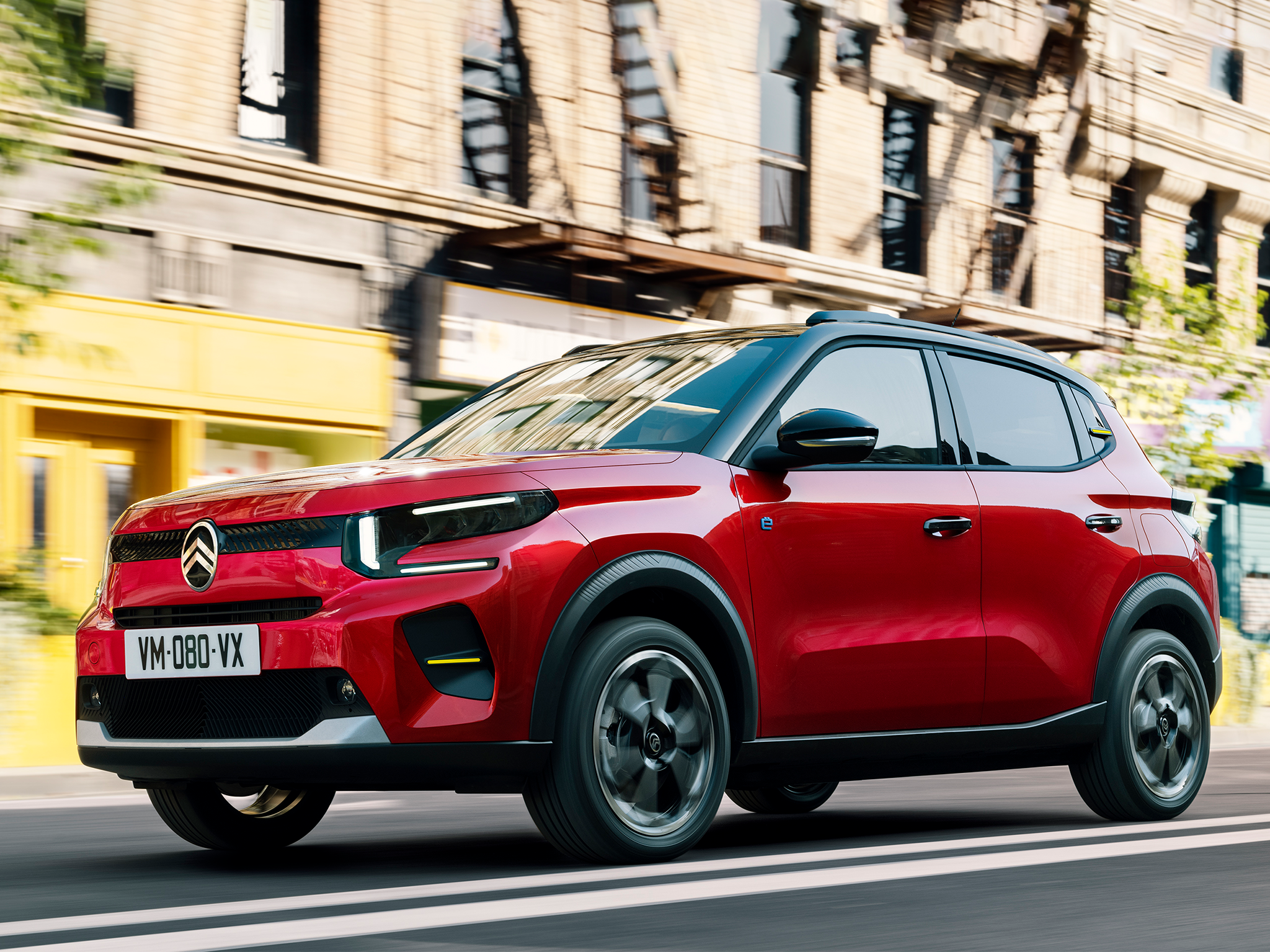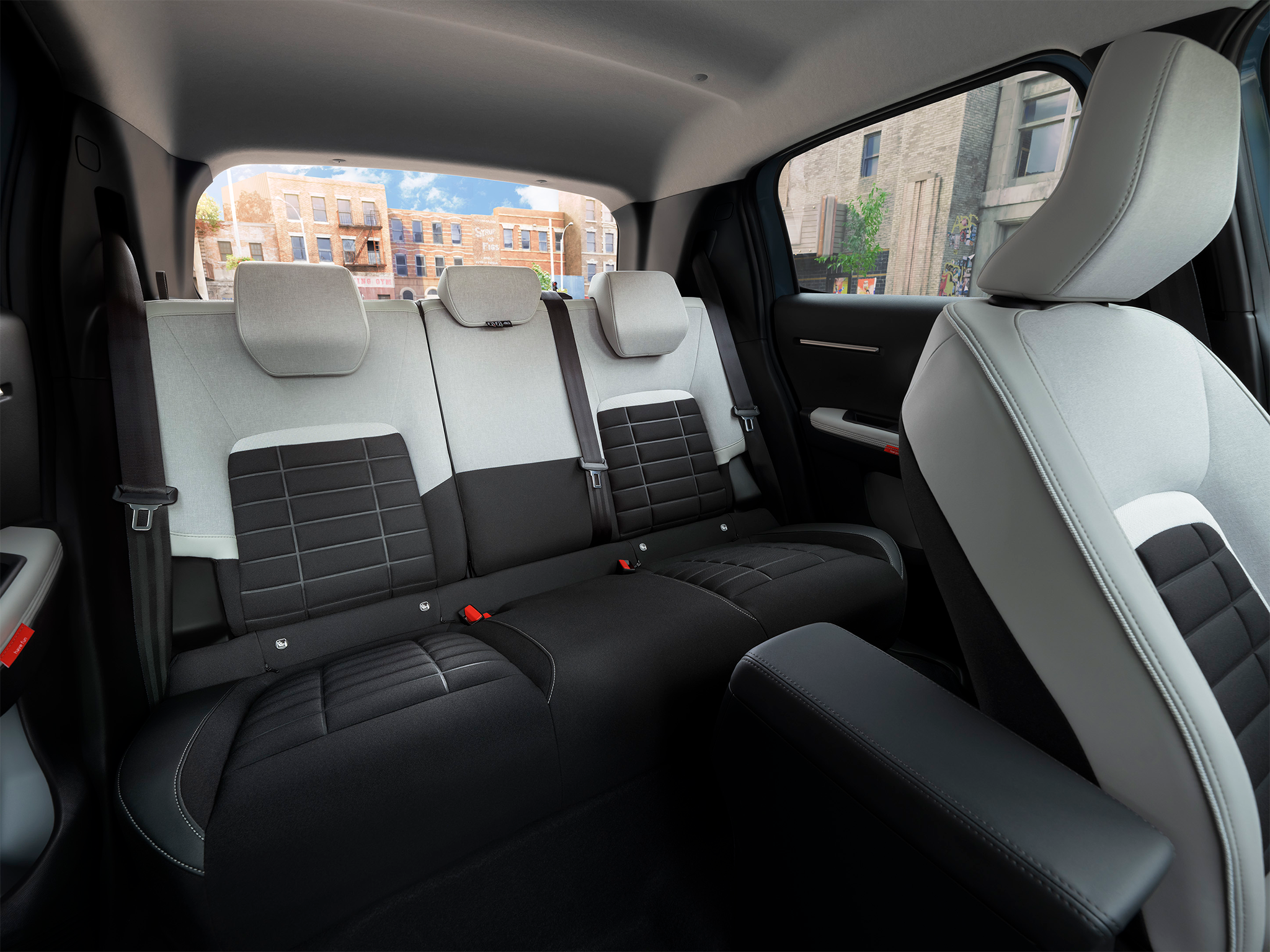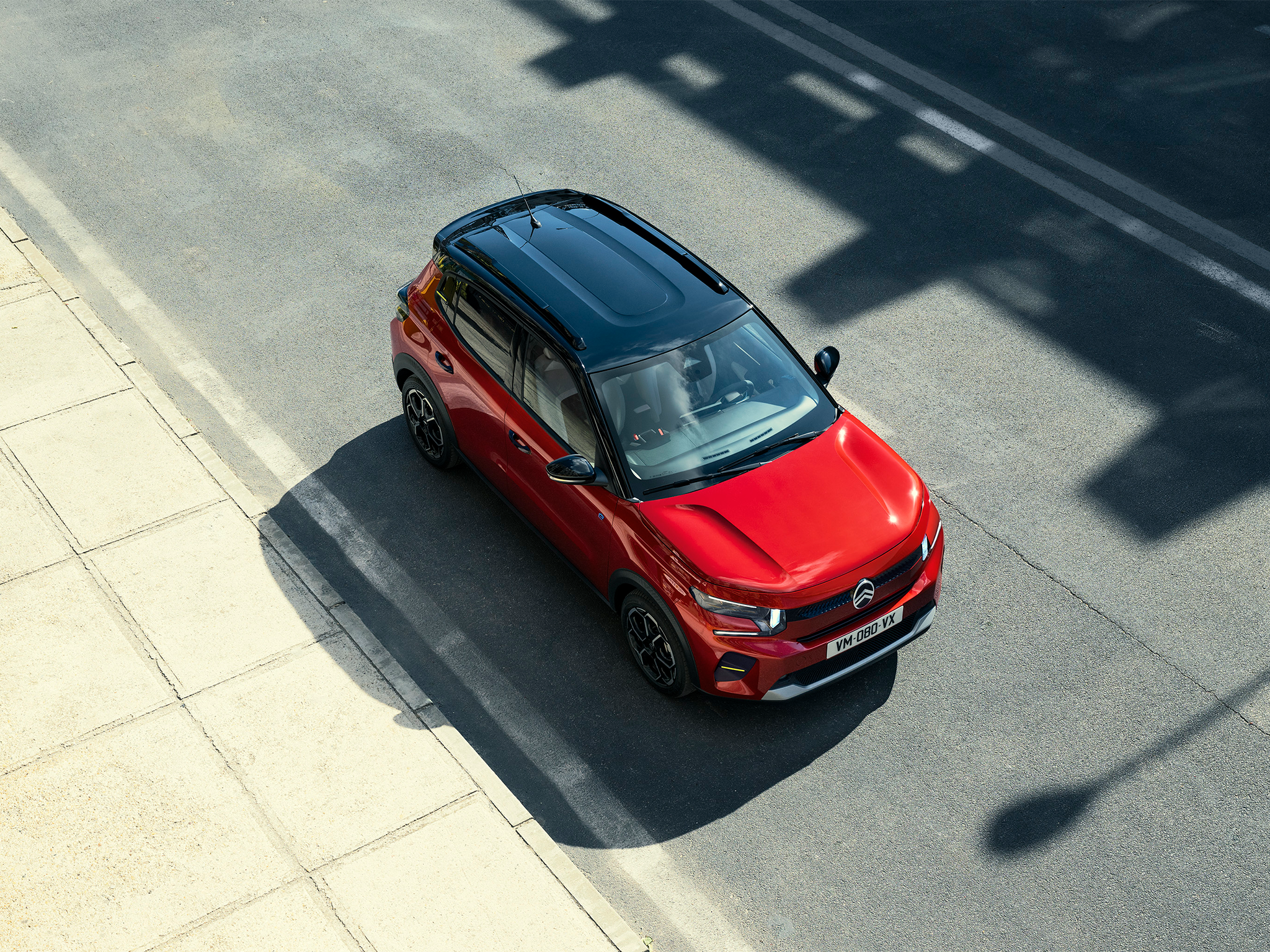Citroen e-C3 review: Cruising EV comfort at a bargain price
A breakthrough model in many ways, the Citroen e-C3 offers cruising comfort, genuine supermini space and practicality with a sensible range, and for a price that undercuts 99 per cent of all other EVs

The Independent's Electric Vehicles Channel is sponsored by E.ON Next.
The Citroen e-C3 is seen by many as the car that might spearhead Europe’s fightback against cheaper Chinese electric cars. It’s made in Europe (Slovakia, in case you’re wondering) and brings a wholly mature driving experience at a price that’s beaten, right now, only by Dacia’s Chinese-built Spring.
The good news is that the e-C3 has precious few compromises. It’s really comfortable around town, as any Citroen should be, and fast enough when required. The cabin materials aren’t all stellar but there’s space on board for four grown-ups, with a decent boot too.
Citroen has also done well to keep the UK line-up really simple, with just two trim levels and one technical spec. So our pick would actually be the more modest Plus, which has all the kit you need yet comes in at less than £22k - an aggressive price for any modern supermini, let alone an all-electric one.
How we tested
Two days with the e-C3 (and its petrol-powered siblings) in Austria gave me good experience of the car over a variety of mostly smooth roads, including slow town streets and quiet country lanes.
Citroen e-C3: From £21,990, Citroen.co.uk

Independent rating: 8/10
- Pros: Value for money, cabin space
- Cons: Iffy cabin plastics
- Price range: £21,990 to £23,690
- Battery size: 45kWh (44Wh usable)
- Maximum claimed range: 199 miles
- Miles per kWh: 3.6 (claimed)
- Maximum charging rate: 100kW DC
- Charging cost per 100 miles on E.ON Next Drive: £1.84
Battery, range, charging, performance and drive
For now at least, there’s just a single spec of Citroen e-C3 to worry about. It has a 45kWh battery (44kWh of which is usable), and a single front-mounted electric motor producing 111bhp. That’s enough, Citroen claims, for a 0-62mph time of 11 seconds, and a top speed of 84mph.
Those aren’t exactly stellar numbers - not many pure-electric cars fail to crack the 10-second mark for that 0-62mph dash - but they’re still strong enough for everyday use. And in practice, the instant response from the electric motor means that the e-C3 still feels nippy enough around town.
The relatively compact battery capacity helps to keep the e-C3’s weight down, and this, in turn, delivers a sensible-looking official range figure of 199 miles (based on our experience, you should be able to get at least 175). Further down the line, there should be a smaller-battery version with about 125 miles of range and a price that starts at less than £18,000.
Charging is via a standard onboard 7.4kW AC unit that, when hooked up to a regular home wallbox, can completely refill the battery from empty in just over four hours. The maximum DC rapid-charging rate is a fairly unspectacular 100kW, but again, the modest battery means that this is enough to take your charge level from 20 to 80 per cent in just 26 minutes.
Citroen does offer an 11kW three-phase onboard charger as an option, although this won’t be much use to most UK customers unless they have access to a suitable chargepoint, usually at commercial premises. And there’s no heat pump, even as a cost extra - so be prepared for that official range to take a bit more of a hit in winter.
On the road, the e-C3 shines brightest in urban situations. It has what Citroen (a brand with a long history of focusing on comfort) calls Progressive Hydraulic Cushions. These are, in effect, snazzy valves at the top of the suspension that help to soothe things out when things get bumpy. They’ve never been fitted on such a small car before and they work really well; this is a vehicle that’s happy to skip over road scars and potholes.
The e-C3’s throttle set-up is smooth and linear, to the point where we’d say it’s easy to drive it as smoothly as a petrol-powered car, without any sudden EV surges. The steering is light but accurate, making it easy to place this four-metre-long vehicle in corners.
The Citroen doesn’t come completely unstuck on faster roads either, although if you do throw it at a corner, you’ll notice some pronounced body roll as the softer suspension set-up struggles a little to deal with the weight shifting about. It’ll cruise happily at 70mph on a motorway, at least; the electric motor remains refined even when it’s pushed, but there is a bit of wind noise at higher speeds.
Interior, practicality and boot space
The e-C3 has a neat cabin that does the basics well, while never straying towards feeling premium. There’s a bit of padded fabric on the dash, but hard plastics dominate elsewhere, including some glossy piano-black finish between the front seats that is, in our experience, far too prone to scratches.
There’s just about enough space for four six feet-tall adults, although those in the rear seats might grumble a little about legroom. They’ll have tons of headroom, though; the e-C3’s relatively boxy shape makes sure of that.
The boot has a hefty lip to load heavy items over, but that low floor means that the overall capacity is a decent 310 litres, more than you’ll find in many conventionally powered superminis. There are no clever storage solutions beyond a single plastic hook for carrier bags, though, and the fact that the e-C3 shares its core chassis with petrol-powered versions means that there’s no scope for any cable storage beneath the bonnet.

Technology, stereo and infotainment
Citroen has taken a novel approach to the e-C3’s dashboard, so the car does without what you’d call a normal instrument panel. Instead there’s a super-slim display that runs across the base of the windscreen; you use this to access key info, like speed and charging levels, by looking above the steering wheel, much as you would with a fancier head-up display.
There’s a more basic e-C3 available in continental Europe that does without a proper infotainment system but Citroen UK hasn’t scrimped, so even the more modest Plus edition available here gets a 10.25-inch central touchscreen. Its interface is easy to use, with big enough shortcut buttons that are easy to prod when you’re on the move. Wireless Android Auto and Apple CarPlay are included as standard, and wisely, Citroen has kept some key functions, like the heating and ventilation controls, on physical switches beneath the display, instead of trying to integrate too much into the digital system.
Prices and running costs
The e-C3 is available in just two versions, called Plus and Max. The Plus would be our pick; it costs from £21,990 on the road, but includes niceties like the 10.25-inch infotainment system, 17-inch alloy wheels, powered and heated side mirrors, air conditioning and rear parking sensors.
Max, on the other hand, gets fancier climate control and electric rear windows (Plus makes do with manual winders), along with rear privacy glass. It costs £1,700 more on paper, although the gap may narrow depending on how Citroen plays with the rates on finance deals.
As an early rule, you can get into an e-C3 Plus for £339 per month on a PCP contract, with just a single month’s payment as a deposit. Increasing your upfront contribution should cut that monthly rate down to beneath £300.
The warranty is pretty standard fare, at three years and up to 60,000 miles. The battery is covered for longer, though; Citroen guarantees it’ll keep at least 70 per cent of its original capacity for eight years or 100,000 miles.

Citroen e-C3 rivals
FAQs
How long does it take to charge?
On a DC fast charger, you can get from 20 to 80 per cent of the battery capacity in 26 minutes. A 7kW home wallbox can refill it from empty in just over four hours.
How much does it cost - is it worth it?
The e-C3 is one of the UK’s most affordable EVs, with a starting price of just under £22k. We’d say that it offers strong value, particularly since the cheapest model has all of the kit you might reasonably need.
Does Citroen replace batteries for free?
The e-C3’s battery pack comes with a longer warranty than the car itself. Citroen guarantees that it will retain at least 70 per cent of its original capacity for 100,000 or eight years, whichever comes first.
The verdict: Citroen e-C3
The great thing about the Citroen e-C3 isn’t its pricing, in isolation. It’s the fact that this affordability comes with so few trade-offs; it’s just a sensible, practical, comfortable small car that happens to be electric, and terrific value with it.






Join our commenting forum
Join thought-provoking conversations, follow other Independent readers and see their replies
Comments